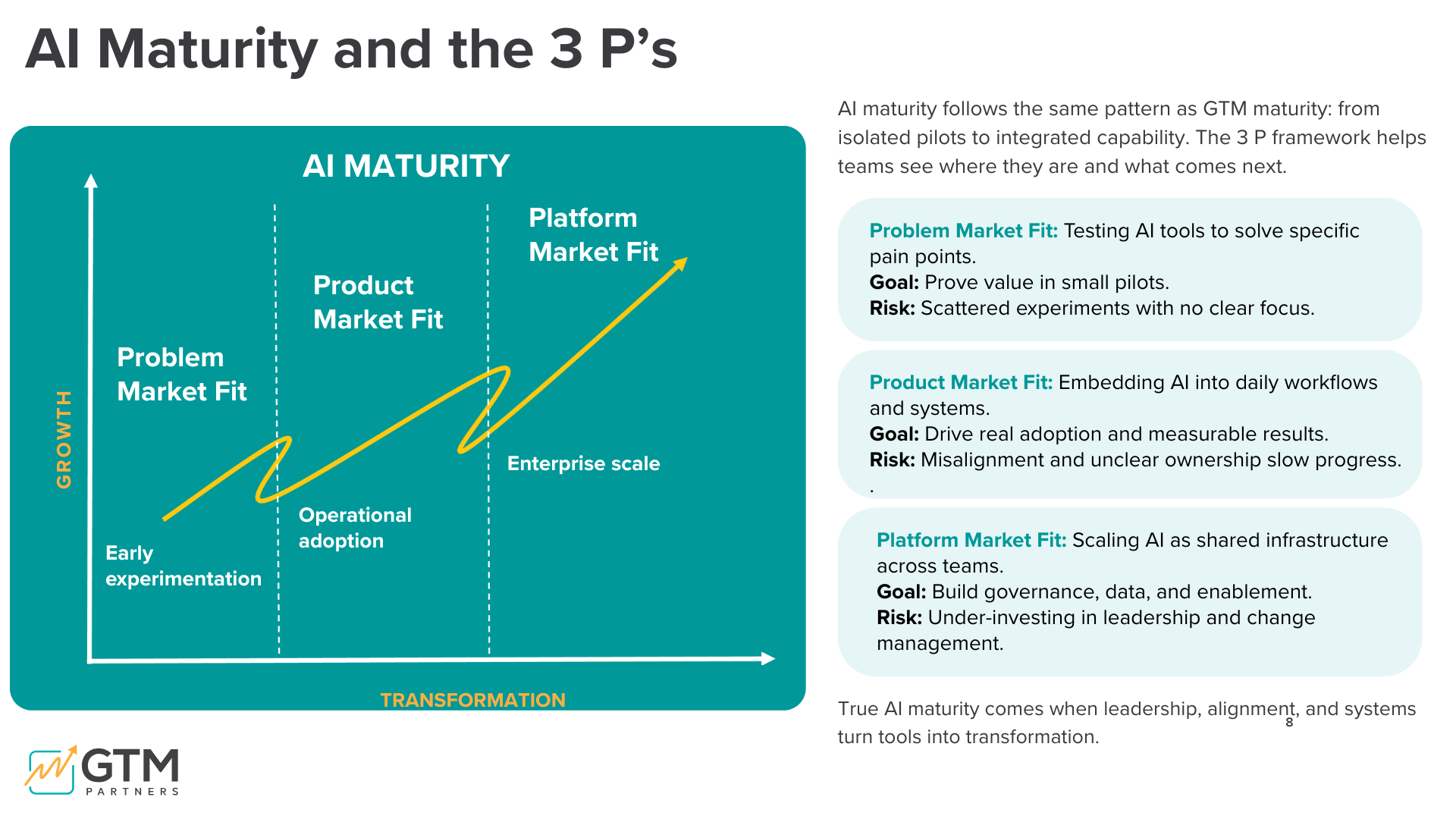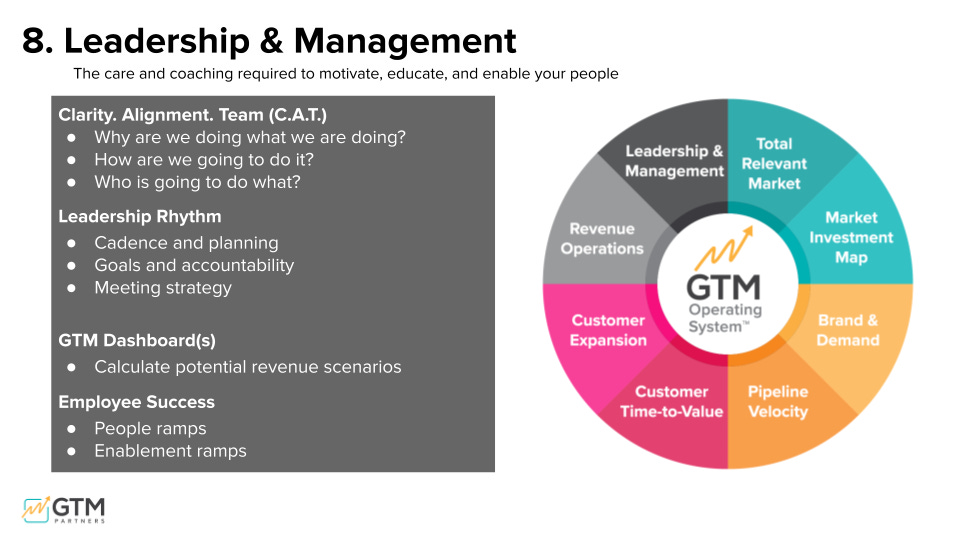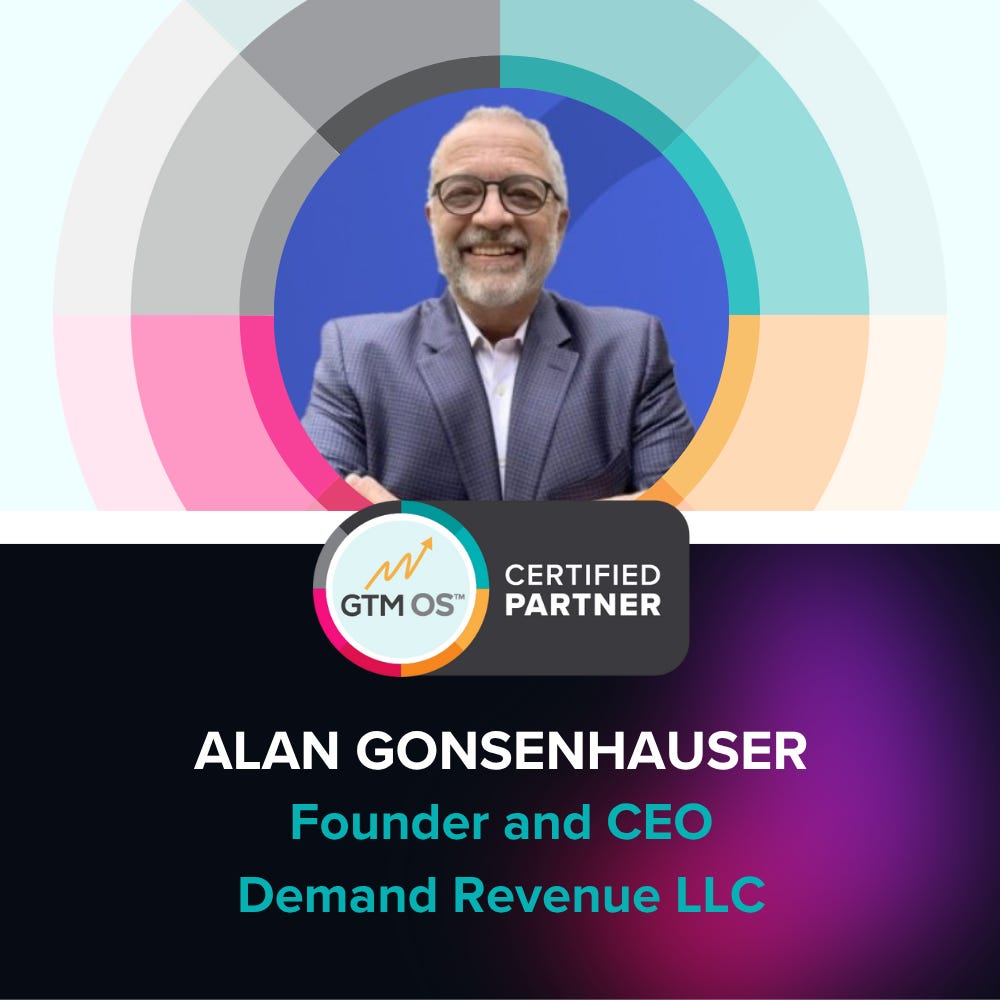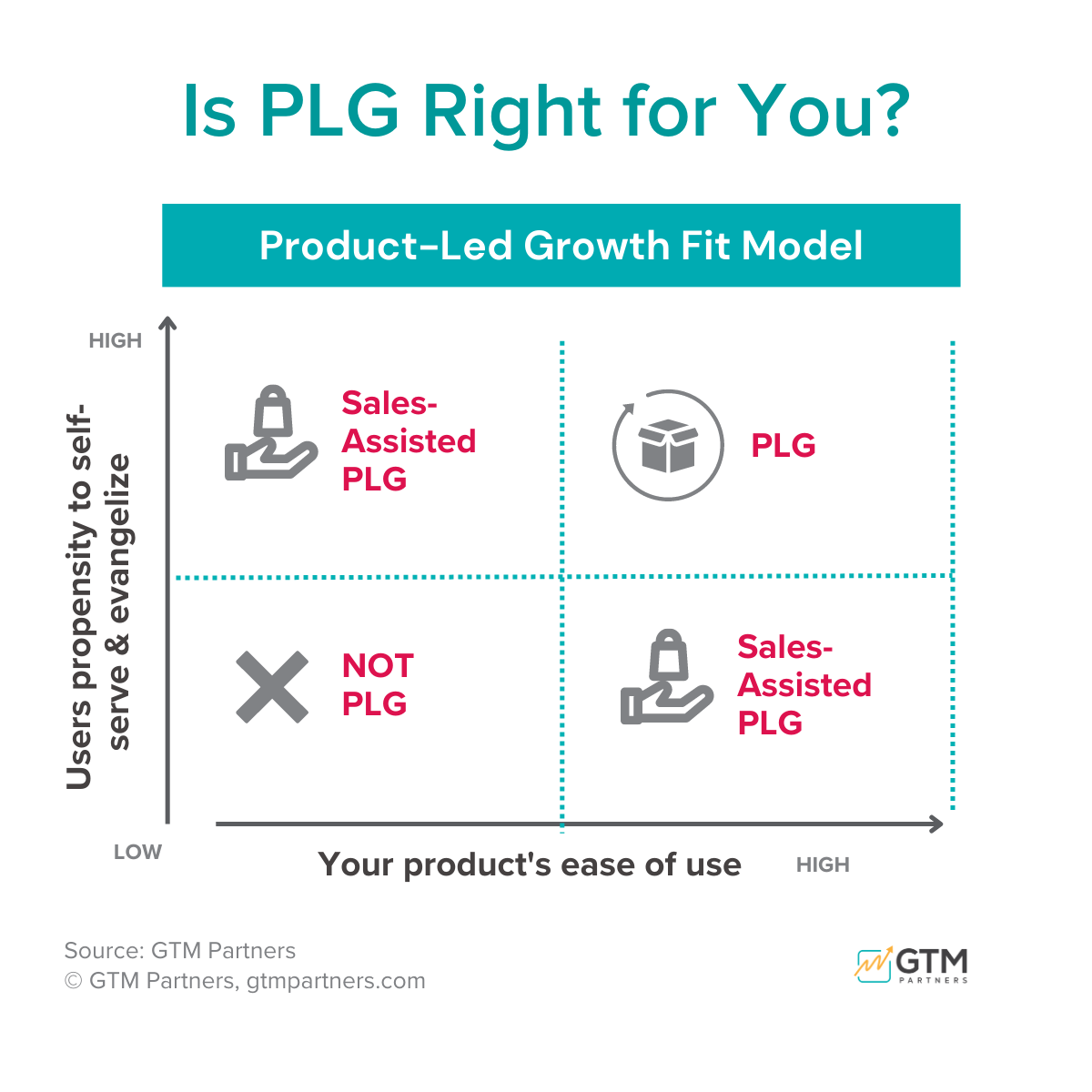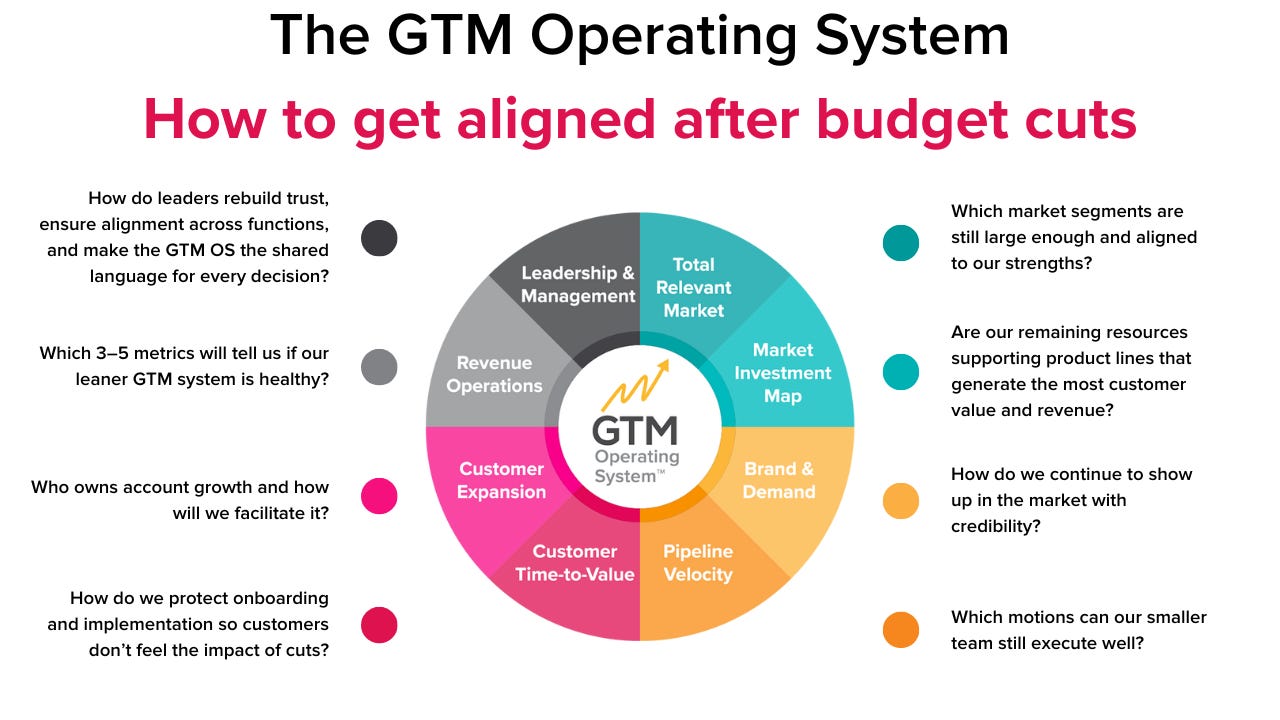Filters
From Pilot to Platform: Why 95% of AI Projects in GTM Stall (or Fail)
Thanks for being one of over 175,000 forward-thinking GTM Leaders who subscribe to this weekly research note.
This week’s research note includes:
GTM Research: From Pilot to Platform: Why 95% of AI Projects Stall
GTM OS Certified Partner Spotlight: Alan Gonsenhauser, Demand Revenue LLC
Upcoming Events and Access
Research: From Pilot to Platform: Why 95% of AI Projects Stall
You hear it everywhere: organizations are investing heavily in artificial intelligence. Products launch, pilot programs begin, teams adopt.
But in so many cases, the impact remains elusive.
Here are a few sobering data points:
MIT research indicates that roughly 95 percent of generative AI pilot programs fail to deliver their promised ROI.
Over 40% of agentic AI projects will be scrapped by 2027 because of unclear business value and rising costs, according to Gartner.
In McKinsey’s State of AI survey, CEO oversight of AI governance strongly correlated with companies reporting bottom-line impact.
According to Forrester, even with widespread adoption, most companies struggle to achieve measurable ROI from AI due to weak data strategy and unclear goals.
73% of companies spend at least $1M per year on generative AI, yet only about one-third see meaningful payoff.
These stats all suggests a stark reality:
Purchasing tools is easy
Embedding them into work is hard
Deriving consistent value is rare.
Diagnosing the Execution Gap
Before we prescribe, we need to understand why the gap exists.
Here are some common causes that show up in our research:
Tool-first thinking, not problem-first
Many organizations purchase a model, then seek ways to utilize it. It results in weak prioritization, scattered pilots, low adoption because use cases aren’t tightly aligned with pain.Poor workflow integration and heavy friction
If AI lives in a separate UI or requires multiple clicks, users drift away. Adoption accelerates when AI is embedded—when it feels like part of the tool they already use.Lack of training and change management
A tool sitting on someone’s desktop isn’t useful unless people know when and how to use it. And unless they are motivated to try it regularly.Leadership neglect and weak governance
Too often AI is delegated to a center of excellence or innovation team. Without direct accountability from senior leadership, the tools remain curiosities rather than mission-critical infrastructure.Technical, integration, and operational debt
Real-world deployment involves data pipelines, latency, model drift, scaling costs. Most AI tools fail not because the model is bad, but because the plumbing is weak.Fragmented pilots that never scale
Many AI efforts remain experimental, unconnected to core systems and teams, so they never cross the chasm to become foundational.
AI Maturity Through the Lens of the 3 P Framework
You already know how the 3 P (Problem → Product → Platform) framework describes business maturity.
We can repurpose it for AI maturity:
AI maturity, like GTM maturity, evolves through three phases.
Most companies are still experimenting with pilots, but true value comes from moving beyond experimentation to embedded, scalable capability. The 3P framework helps leaders understand where they are — and what it takes to move forward.
1. Problem Market Fit:
Early experimentation stage. Teams test isolated AI tools or pilots to solve narrow problems like automating manual tasks or generating quick content.
Goal: Validate that AI solves a real business problem and delivers measurable efficiency.
Common pitfall: Too many uncoordinated pilots and no clear prioritization.
2. Product Market Fit:
Operational adoption stage. AI becomes part of repeatable workflows across functions — sales, marketing, customer success.
Goal: Integrate AI into existing systems and processes so it’s used daily.
Common pitfall: Lack of alignment between business units and unclear ownership slows adoption.
3. Platform Market Fit:
Enterprise scale stage. AI evolves from tool to infrastructure — a shared capability that powers decisions, automation, and innovation across teams.
Goal: Centralize AI through governance, data infrastructure, and enablement to drive consistent value.
Common pitfall: Failing to invest in training, governance, and leadership cadence to sustain usage.
Reaching platform market fit requires more than buying tools — it demands leadership, alignment, and a clear operating system that turns AI from isolated experiments into a company-wide capability.
In practice, we often see organizations stuck in Problem / Ideation or early Transition. They spin up pilots, delight a few users, but never manage to embed broadly or scale.
The missing bridge is not technical . . . it is organizational.
Using C.A.T + Pillar 8 to Close the Gap
To move from adoption to impact you must build structure. Here’s how the C.A.T framework and Pillar 8 (Leadership & Management) can guide your approach.
The C.A.T. Framework stands for Clarity, Alignment, and Team — three conditions every organization needs to move in the same direction. It helps leaders translate strategy into action by answering three core questions:
What are we doing and why? '
How will we do it?
Who is responsible?
When paired with Pillar 8: Leadership and Management, which focuses on cadence, accountability, and coaching, C.A.T. becomes the foundation for operationalizing AI. Together, they give companies the rhythm and structure needed to turn adoption into measurable business impact.
Clarity (What and Why)
Leadership must define a clear AI vision that ties to tangible business outcomes (for example, “reduce support rework by 30 percent,” or “automate analysis tasks across teams”).
Sequence use cases deliberately. Start with a handful of high-leverage pilots rather than dozens of small experiments.
Ensure AI is part of your operating system. AI goals and adoption metrics should be on the agenda in strategic planning and review meetings.
Alignment (How)
Conduct an AI readiness assessment across functions: data maturity, tooling gaps, team willingness.
Create standardized playbooks. For sales, support, operations — define how AI should be used (for example: AI draft → human edit → publish).
Put guardrails and governance in place around data, bias, security. When people trust the tool, adoption rises.
Institute feedback loops. Dashboards, regular retrospectives, user surveys — use real data to improve the tools and processes.
Team (Who)
Define and staff roles: AI champions in each function, a central integrator team, product owners responsible for adoption.
Tie incentives and metrics to usage or impact. For example, part of team bonuses could depend on “percentage of tasks routed via AI assistance.”
Invest in training, coaching, and peer-to-peer learning.
Move beyond heroics. The goal is not the single super user saving the day, but broad habitual usage.
Leadership Rhythm (Pillar 8)
In your operating model, leadership cadence, planning, and accountability are essential. Use Pillar 8 to anchor AI into your management rhythm:
In quarterly and monthly reviews, discuss AI adoption metrics, blockers, roadmap progress.
Make AI objectives part of your OKRs or performance plans.
Require each functional leader to surface AI-related successes and challenges in their reports.
Host “office hours” or drop-in clinics where teams can raise problems, get coaching, or request support.
Use our framework for understanding the ROI of your AI initiatives.
Checklist: Are You Stuck in AI Problem-Market Fit?
Here are warning signs:
You are piloting ten AI tooks, but usage is low in each.
Most users tell you “I forgot to try it.”
There is no centralized roadmap or governance.
A small innovation team runs AI with little structural support.
Metrics exist (e.g. views) but not impact metrics (e.g. time saved).
If you see more than two of these, you are likely in the Ideation trap.
What You Can Do Now
Pick one or two use cases tied to financial or operational outcomes.
Build clarity: craft an AI adoption narrative and align it with business goals.
Define roles and assign accountability for adoption and operation.
Embed AI into workflows where people already work.
Manage leadership cadence: report adoption, bring blockers to the surface.
Use feedback loops to refine and expand.
Conclusion
The paradox of high AI adoption but low realized value is not a technical problem alone.
It is a management, organization, and adoption problem.
The 3 P framework helps you see maturity stages. C.A.T and Pillar 8 provide the governance, clarity, and rhythm to move across those stages.
If you lead the charge on AI adoption in your organization, your job is not just to choose the model — it is to build the machine (the operating system) around it so people live in it, trust it, and use it.
This is exactly the kind of challenge we explore at GTM University — how to lead through complexity, connect strategy to execution, and build teams that move in the same direction.
Whether the topic is AI, alignment, or leadership, the goal is the same: to help go-to-market executives operate with clarity, discipline, and purpose.
If your organization is navigating change and you want to strengthen how your GTM teams plan, communicate, and execute, GTMU is designed to help you do that.
Certified Partner Spotlight: Alan Gonsenhauser, Demand Revenue LLC
Interim / Fractional CMO, CMO Coach, and GTM Advisor for Scalable, Sustainable, Intelligent Growth
When B2B growth companies need to turn marketing into a true revenue engine, they turn to Alan Gonsenhauser. As the founder of Demand Revenue LLC, Alan brings a rare mix of executive leadership, operational depth, and strategic GTM expertise—helping organizations align, scale, and perform.
A seasoned executive with 11 CMO roles and 3 P&L GM roles under his belt, Alan has led global marketing, sales, finance, and operations teams across enterprise software, SaaS, and health tech. He also spent six years coaching over 150 CMOs worldwide during his tenure at SiriusDecisions and Forrester.
At Demand Revenue, Alan has worked as an Interim/Fractional CMO, CMO Coach, and GTM Advisor to private equity portfolio companies, high-growth B2B firms, and global enterprises since early 2021. He applies proven frameworks like the GTM Operating System and others to accelerate pipeline, boost marketing performance, and align leadership teams around predictable, scalable growth.
If you’re in private equity or advising portfolio companies, don’t miss Alan’s recent article: “Successful Go-to-Market Strategy for PE Firms”.
In it, he outlines a proven playbook for driving revenue growth across portfolio companies by aligning GTM strategy, execution, and leadership. It’s a must-read for operating partners and CEOs looking to deliver outsized returns.
Where Alan Delivers Impact:
Interim & fractional CMO leadership
GTM strategy and cross-functional alignment
Marketing performance optimization
CMO coaching and executive team enablement
Learn more: Alan Gonsenhauser Partner Page →
If you’d like to be a certified GTM Partner like Alan and nearly 50 others, we’d love to talk to you about how to make that happen.
Upcoming Events: Where Sangram, Bryan, or a GTM Certified Partner Will Be Speaking
(DM Sangram for a discount code to attend or to get slides after the talk)
Fix Your Revenue Leaks - A GTM Workshop (hosted by GTM Certified Partner Sandy Yu) is running 7 city roadshow on 15 GTM problems in a city near you and there are 4 more to go: Copenhagen (Oct. 16), Singapore (Nov. 4), New York City(Nov. 13), Melbourne (Dec. 3)
The Work Pause: a One-Hour Workday Retreat for GTM Leaders (hosted by GTM OS Certified Partner Sarah Allen-Short), October 22 from 12-1 p.m. EST on Zoom.
Why Most Startups Don’t Scale: The 15 GTM Mistakes Nobody Talks About (Hosted by GTM Certified Partners Tim Hillison of Entry Point 1, Lydia Flocchini of Motion to Scale, and Tech Crunch). This event is part of Tech Crunch Disrupt 2025, Oct 28, San Francisco
Usage Economy Summit (hosted by LogiSense), Sangram will be presenting, Nov 5, San Francisco
Love,
Sangram and Bryan
p.s. Access GTM University | Hire GTM OS Certified Partners | Read Fractional Friday
Thanks for reading GTMonday by GTM Partners!
Subscribe for free to receive new posts and support our research work.

